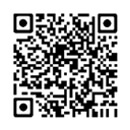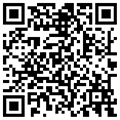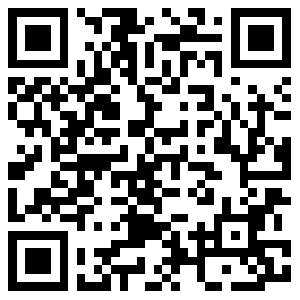找到90条结果
-
杏林快传|我院急诊科成为国家中医急诊与重症医学区域诊疗中心分中心彭军良 主任医师 2021-04-25 06:25:25
-
患者的结局竟然会与未登记但合适人群的结局显著不同。OSCILLATE试验未登记竟然与死亡风险增加有关。此外,合适者但未登记的经传统机械通气的患者发生严重ARDS的比例少于研究组的患者,而使用高频震荡通气的试验外的患者比纳入研究的患者发生严重ARDS的比例更高(此段涉及研究设计,看不懂可以略过)。 D.呼吸机相关性膈肌功能不全机械通气与膈肌萎缩的关系已经在不少人体研究中得到证实。一项基于每日膈肌超声检查的大规模观察性研究发现,机械通气后膈肌厚度出现下降,提示膈肌萎缩。而研究表明机械通气期间膈肌收缩无力与泛素-蛋白酶体激活有关。这提示蛋白平衡在膈肌无力的重症患者中是重要的治疗靶点。 E.王智刚 主任医师 2017-02-16 15:42:13
-
急性缺血性中风患者的重症监护入院和管理:欧洲重症监护医学会的横断面调查摘要背景:关于危重病急性缺血性中风(AIS)患者的重症监护治疗,目前尚无具体的建议,关于该人群的最佳通气、血流动力学和普通重症监护室(ICU)治疗目标仍存在问题。我们进行了一项国际调查,以调查AIS患者的ICU入院标准和管理。方法:2019年11月1日至2020年3月30日期间,欧洲重症监护医学会网站上提供了一份电子问卷,包括25个项目,分为3个部分,并通过神经重症监护(NIC)部分时事通讯进行宣传。这项调查通过电子邮件直接发送给NIC成员,并得到了欧洲重症监护医学会的认可。结果:198个中心共有214名被调查者,应答率为刘建仁 主任医师 2021-03-14 11:41:22
-
2.危重患者的感染 G.呼吸机相关性肺炎的预防与诊断气管插管后,来自口咽部的病原菌可快速地在下呼吸道进行定植。对此,采用聚氨酯制成的圆锥形气囊导管可实现更持久的密闭效果,在临床前研究中已取得可观的结果。但是一项多中心开放标签临床研究却未能发现新型气囊设计的长处,该研究结果表明插管后第二天约2/3的患者出现下呼吸道微生物定植,但真正继发呼吸机相关性肺炎(VAP)的患者仅占14.4%。其他用于预防大量病原菌在下呼吸道定植的方法也被研究过,包括声门下分泌物引流,床头抬高30-45℃,选择性肠道去污,洗必泰漱口,益生菌等。Branch-Elliman及其同事研究了一组最佳的VAP预防措施:声门下气管导管内吸引、益生菌、医疗保健改善研究所VAP预防Bundle。对于VAP预防的必要性,述评文章指出因耐药菌所致的VAP发生率的增加可使得预防措施的成本支出更加昂贵。为了质量提高,促进VAP监测数据的可靠性,美国国家医疗安全网提出了另一种定义:呼吸机相关性事件(VAEs)。该定义背后的一个关键点在于呼吸机相关的条件:根据呼吸机设置发现的呼吸恶化可能在一些情况下会归类为感染相关的呼吸机相关性条件,或者会归类为可疑VAP或确定是VAP。然而迄今为止,VAEs是否可以预防、如何预防、能够多大程度上进行预防,这些问题都没有证据可供回答。Klompas及其同事从事了一项关于使用SBT和自主唤醒试验预防VAE的多中心研究,他们观察到实验组机械通气时间以及ICU与医院住院时间显著缩短,每个机械通气的VAE发生率显著降低,但并不显著降低VAP发生率或影响整个住院死亡率。快速发现VAP并准确选择抗生素是临床重要的目标。有很大一部分患者在符合VAP诊断前可能出现细菌感染。在一项前瞻性单中心队列研究中,Douglas及其同事得出的结论是,与临床培养结果相比,采用新型的自动光镜检测VAP相关性病原菌的敏感性(100%)和特异性(97%)明显更高,而且时间短(4.5h) H.社区获得性肺炎当患者病情危重、无法鉴别是SIRS还是感染时,临床医师通常会使用经验性抗生素治疗。然而,我们也有希望看到通过高通量生物技术获得更好的脓毒症生物标志物,表达谱就是这样一种能快速筛选出数千种mRNA的方法。Scicluna及其同事定义了一个包含78个基因的基因谱,它可以将被治疗的肺炎(很多后来被发现并没有肺炎)中的严重社区获得性肺炎(CAP)筛选出来。在这78个基因中,FAIM3:PLAC8被证实是区别有无严重CAP最准确的预测因子。 I.脓毒症 I1.优化抗生素治疗:连续or间断?是严重脓毒症中很有可能改进治疗结局的干预措施。β-内酰胺类抗生素发挥时间依赖性活性,其杀菌与治疗效果与维持时间有关。Dulhunty及其同事在一项RCT研究中比较了严重脓毒症患者连续与间断给予β-内酰胺类的治疗效果,然而令人失望的是患者20/90天存活率、ICU-free天数、临床治愈率、第14天器官衰竭-free天数、菌血症持续时间的差异均未见统计学意义。值得一提的是,其他临床研究却有表明连续性输注的长处。 I2.真菌感染:用or不用?对假丝酵母菌属感染认识的不足以及缺乏敏感培养方法的事实促使经验性使用抗真菌治疗,尤其是最近使用过广谱抗生素或免疫抑制的患者。然而,一项纳入1491例非中性粒细胞减少和非移植的ICU患者的观察性研究发现,经验性抗真菌治疗后30天死亡率或侵袭性念珠菌病的发生并无变化。因此在没有确证侵袭性念珠菌感染的依据下进行抗真菌治疗是否能获益已经受到挑战,甚至包括具有多种真菌感染风险的ICU人群。 I3.导管相关性感染(CRIs):封or不封?尽管实施了中心静脉置管bundle,CRIs仍然与危重患者并发症及死亡率增加有关。乙醇封管液(ELS)封管是一种新型的治疗和预防CRIs的方法,因其可致蛋白质变性而具有广泛的杀菌作用。Souweine及其同事为预防CRI在1460例成人ICU患者中评估了2分钟ELS对透析导管的抗感染效果。但结果却是:ELS组与对照组CRI发生率分别为2.3%和1.6%(P>0.05),而且ELS组导管相关性的脓毒症比例竟然更高(P=0.03)。因此,该研究是对类似于ELS封管预防CRI的挑战。 I4.SIRS很多非感染性情况可能导致SIRS的发生,但SIRS标准以往常用于脓毒症bundle并作为临床试验的入选标准。而需要两项或更多的SIRS标准用于定义严重脓毒症确实会排除很大一批具有类似表现的患者。另一方面,Churpek及其同事在一项研究中发现将近一半的病房患者至少一次符合SIRS标准,该研究强烈建议使用SIRS两项或以上标准作为脓毒症筛查工具不切实际。对此,最新的sepsis-3定义不再沿用SIRS标准。王智刚 主任医师 2017-02-16 15:52:03
-
1.急性呼吸衰竭 A.高流量鼻导管氧疗(HFNC)过去20年,经鼻导管高流量加温湿化给氧系统已被研发用于替代标准的氧输送系统(如文丘里面罩)和无创通气(NIV)。在310例急性低氧性呼吸衰竭不伴高碳酸血症的患者中进行的HFNC、标准氧疗、NIV随机化试验表明,虽然在气管插管的比例上与NIV或标准氧疗接近,但HFNC可显著增加无呼吸机时间并降低ICU及90天死亡率。在一项包括238例严重初始低氧血症(PAO2/FIO2<200mmHg)患者的事后校正分析中,HFNC组患者插管率显著低于标准氧疗和NIV组。而严重低氧血症亚组插管率的降低可解释HFNC组随机化后更低的90天死亡率低。在诸多扩展的适应征中,将HFNC应用于喉镜支持下窒息时提供氧合备受关注。这一预防措施目标是增加气管插管患者的最低动脉血氧饱和度。到目前为止,文献中仅见部分个案报道,个案系列以及前后比较研究,这也为HFNC在成人呼吸衰竭气管插管中的应用提供了一定的证据。然而,在一项开放标签随机化试验中,与常规治疗相比,气管插管过程中窒息氧合并不增加最低动脉血氧饱和度。而2015年另一项多中心随机化开放标签研究也得出了类似的结果。点击蓝字链接查看既往发布:成人加温湿化高流量鼻导管氧疗(HFNC) B.无创通气(NIV)对于NIV成功者,它可以改善患者结局,即避免插管。但与此同时也可使患者结局恶化:即NIV失败者则耽误插管。最新有关目前NIV使用的数据表明更好的患者选择与医生的技术能力与NIV使用量的增加及其成功率、整体死亡率的降低相关。在急性非高碳酸血症性呼吸衰竭的免疫功能不全的患者,Lemiale及其同事报道早期使用NIV与仅实施的氧疗相比并不降低28天死亡率。尽管如此,由于所观察到的死亡率低于预期,研究效能有打折扣。 C.ARDS C1.发病机制新知尽管广泛实施低潮气量呼吸机策略,研究者仍然报道ARDS患者肺部出现早期高纤维增殖活性,后者以往被发现与不良预后有关,死亡率高,和/或延长呼吸机依赖。最近证据表明机械通气尤其是明显出现过度牵张可促进ARDS患者纤维化的产生。Zhang及其同事研究报道了midkine(肝素结合细胞因子,与炎症及组织修复有关)与肺纤维化有关。而17例机械通气的ARDS患者midkine血浆水平高出正常志愿者的三倍,而对培养的人肺上皮细胞进行机械牵张可通过midkine-Notch2-血管紧张素转化酶抑制剂信号通路诱发上皮细胞-间叶细胞转化。相比之下,急性肺损伤模型的midkine敲除小鼠在使用机械通气时肺纤维化程度明显降低。ARDS时可溶性晚期糖基化终产物受体(sRAGE)水平升高并与疾病严重性及其预后相关。大鼠酸相关肺损伤模型中,肺泡液体清除率与血浆及支气管肺泡灌洗液sRAGE水平呈负相关。因此,sRAGE可能是ARDS期间肺泡液体清除率的一个可靠标志。ARDS的死亡率与非肺性器官衰竭强烈相关,然而脏器衰竭对ARDS相关死亡的特别作用尚未被评估。最近的研究发现支持这样的观念:ARDS是机械通气患者谵妄的独立危险因素,而至少有一部分的ARDS相关的早期死亡可归因于急性脑功能不全。 C2.通气策略:还可以更进一步目前ARDS机械通气策略包括低潮气量和高PEEP。然而,增加PEEP对患者结局的影响明显依赖于其对氧合的作用。更高水平PEEP的益处看似局限于大多数严重低氧血症或对高PEEP下氧合反应明显的患者。现在证据表明越早实施这种保护性通气,患者的存活率就越高。其原理是利用预计的体重来滴定潮气量,从而减少呼吸机相关的肺损伤。基于ARDS患者可供通气使用的肺容积显著下降,Amato及其同事提出了根据呼吸系统顺应性(而不是采用估计的肺容积)对潮气量进行标准化的设想。借助于9项RCT研究数据,他们发现潮气量/呼吸系统顺应性(又叫驱动压,呼吸机上可测)比值最能对患者进行危险分层。然而驱动压的使用仍然需要高质量的RCT研究进行临床实用性与安全性确证。王智刚 主任医师 2017-02-16 15:37:26
-
临床上新开展的技术,其远期安全性、有效性需进一步验证。随着医学治疗设备和技术的不断更新和发展,希望有更多的治疗方法被应用于急性重症胆囊炎的治疗。本文选自:王利军,老年急性重症胆囊炎经皮经肝胆囊穿刺引流术后择期行腹腔镜胆囊切除术时机选择的临床分析。赵刚 主任医师 2021-02-15 21:22:12
-
华山医院传染科主任张文宏教授近在回答欧洲华人视频问题时,解释了营养是新冠肺炎轻症转重症最重要因素。故强调不应喝粥吃方便面,而应多吃牛奶鸡蛋,因为蛋白质能促使体内产生抗病毒抗体。对此观点,本人作为张教授本院不同科室同仁,完全表示赞同。当然,我们都理解,不同于学术论文,甚至也不同于科普文章,视频问答不可能做到完整全面。本文愿意就该题目作些补充扩展,希望对广大的普通民众有所帮助。(至于网上有人把张教授的观点称为崇阳媚歪,我想,这不在我们现在关于医学讨论的范围)。 要回答如何防止新冠肺炎由轻症转化成重症这一问题,首先要回答哪些人容易患重症新冠肺炎。张教授在视频中说,他研究了他科里一例轻症突然陆福明 主任医师 2020-04-26 07:51:55
-
瘾者的焦躁不安及抑郁。 2.中成药 肝火扰心症:代表药:轻症逍遥散、加味逍遥散;重症可用龙胆泻肝丸;大便秘结者可合用当归龙荟丸。 痰热扰心症:代表药牛黄清心丸。 心血瘀阻证:在心血管科就诊合并焦虑抑郁的患者中以这一证型最常见。代表药:冠心丹参滴丸。 心脾两虚证:代表药:人参归脾丸、九味镇心颗粒、天王补心丹等。 《双心疾病中西医结合诊治专家共识2017》:心可舒片适用于心血瘀阻证;舒肝解郁胶囊、疏肝益阳胶囊适用于肝气郁结证;养心氏片适用于气虚兼见血瘀证。 (三)非药物治疗:包括顺志从欲法、精神内守法、认知引导法、情志蒋伟 副主任医师 2022-12-04 08:55:01
-
感谢患者对我的信任,根据本人专家门诊预约的实际需求情况,从下周起新增专家门诊,除了每周五上午专家门诊外,新增每周五下午呼吸与危重症医学科专家门诊,门诊地点仍然在常州市第一人民医院门诊大楼六楼高级专家门诊603室。 另外,患者朋友仍然可以通过微医在线预约面诊,面诊前,患者在线申请与我充分沟通,由我本人对患者的病情充分了解后,确定面诊时间点,以确保诊治质量。 常州市第一人民医院 呼吸与危重症医学科 王智刚大夫 2020年10月17日王智刚 主任医师 2020-10-17 11:11:49
-
作者: 赖伟红 医学博士,临床信息学管理硕士,副研究员A case report published in Pharmacotherapy describes the successful treatment of a patient with COVID-19 with remdesivir antiviral therapy 13 days after symptom onset. A male aged 40 years was admitted to Mercy Health Saint Mary’s Hospital, Grand Rapids, Michigan, 3 days after the onset of COVID-19 symptoms (cough, fever, shortness of breath). The patient was obese, had hypercholesterolemia, and had a history of anxiety, depression, and vaping with nicotine. The patient’s condition progressed and he was mechanically ventilated. A request for compassionate use remdesivir was submitted on the same day he tested positive for SARS-CoV-2 on positive real-time reverse transcriptase polymerase chain reaction (RT-PCR).Supportive measures, including a 5‐day course of hydroxychloroquine, cefepime 2 g every 8 hours, and azithromycin 500 mg every 24 hours were maintained until remdesivir was delivered on day 9 of hospitalisation (13 days after symptom onset). A 200 mg IV loading dose was administered to the patient, followed by 100 mg IV maintenance dose every 24 hours for the next 9 days. During the following 48 hours, the patient continued to progress and was able to tolerate aggressive mechanical ventilation weaning. On day 16 of illness (hospital day 12), he was extubated without incident. Oxygen saturations remained stable requiring 2 to 3 litres of oxygen by nasal cannula and his oxygenation saturation was maintained on room air by day 17 of illness (hospital day 13).The patient continues to be in stable condition on room air and is progressing towards discharge. “Late initiation of remdesivir may be effective in treating SARS‐CoV‐2, unlike antivirals utilised for different disease states, such as oseltamivir, which are most effective when started as soon as possible following symptom onset,” wrote Julie J. Belfer, Mercy Health Saint Mary’s, and colleagues. “Urgent action is needed by regulatory agencies to work with drug manufacturers to expedite the study and approval of investigational agents targeting SARS‐CoV‐2 as well as to meet manufacturing demands.”赖伟红 副主任医师 2020-04-15 23:36:15

 浙公网安备
33010902000463号
浙公网安备
33010902000463号



